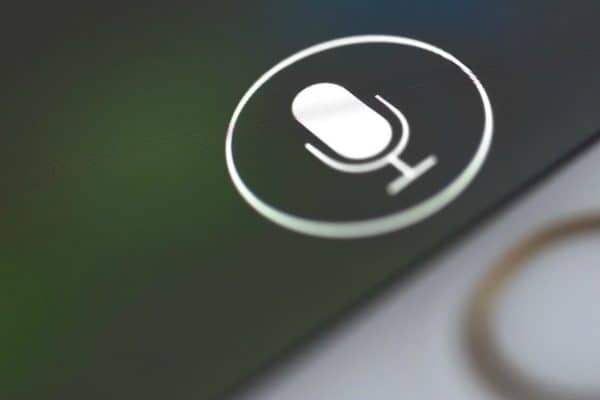Understanding Lines of Credit
What is a line of credit?
A line of credit (LOC) is a flexible borrowing option, agreed with a bank or financial lender, that allows you to access money as you need it, up to a set amount. Unlike a personal loan, where a lump sum is borrowed and must be repaid, a line of credit is a type of revolving loan, similar to using a credit card or overdraft; money up to the agreed amount can be borrowed at any time without having to reapply or negotiate new terms, giving you the freedom and flexibility to manage your finances.
How does a line of credit work?
With a line of credit, you and your lender agree on the maximum amount you can borrow. From there, it’s entirely up to you when and how much you want to take out within that limit. Interest rates are often variable and start accruing as soon as you borrow, but don’t worry—you only pay interest on what you actually use. Just keep an eye on any rate changes to make sure your repayments fit your budget.
With an LOC, you can make repayments whenever you like, choosing how much to pay back within the agreed terms. However, most lines of credit come with an expiration date, so you’ll want to repay what you owe before then or chat with your lender about renegotiating the terms.
What can a line of credit be used for?
A line of credit is a great option for managing unexpected expenses that pop up when you least expect them. Since you can access the funds whenever you need them, they’re perfect for covering surprise costs. LOCs typically offer a smaller amount than traditional loans, so they’re not usually the best choice for big one-time purchases.
What are the different types of lines of credit?
All types of lines of credit fall under two main categories:
- Secured loans: With these loans, you provide collateral—like your home or savings—giving the lender extra peace of mind. Because of this added security, secured loans often come with lower interest rates and higher credit limits, making them an attractive option for those looking to borrow more without breaking the bank.
- Unsecured loans: You don’t need to put up any collateral with these loans. However, they usually look for a higher credit score to qualify because there’s more risk. As a result, unsecured loans often come with lower borrowing limits and higher interest rates.
Read more: Types Of Credit
Personal line of credit
A personal line of credit (PLOC) is an unsecured loan and one of the most popular options for borrowers. While PLOCs can have slightly higher interest rates and lower borrowing limits than other types, they offer the flexibility to access funds whenever needed, perfect for unexpected expenses.
Related: Loan VS Credit Card
Business line of credit
Issued to businesses only, a business line of credit can be either secured or unsecured, depending on how much you’re borrowing and your company’s market value and profitability. This flexible option allows you to access funds as needed rather than taking out a loan. With this type of LOC, interest rates tend to be variable, so staying on top of your repayments is essential.
Home equity line of credit
A home equity line of credit, or HELOC for short, is a type of secured credit line. This variation of LOC uses your house as collateral. Therefore, the borrowing limit is calculated based on your home equity – the market value of your house minus what you owe on your mortgage. Although a HELOC often comes with lower interest rates due to the added security for the lender, they tend to have a set time limit and closing costs. With a home equity line of credit, staying on top of repayments is crucial to keep your home safe and sound.
Demand lines of credit
A demand LOC is not as commonly used and can be secured and unsecured. As the name suggests, with a demand line of credit, the lender can ask for the total amount borrowed back at any time, including any interest accrued. Because of this feature, demand lines of credit usually come with smaller borrowing limits.
Who can qualify for a line of credit?
Qualifying for a line of credit depends on the type you’re looking for and how much you want to access. If you’re going for a secured line, you’ll need to provide collateral, but for most other types, having a solid credit score, a steady income, and a low debt-to-income ratio is key.
Lenders also like to check your employment background to gauge your financial stability, as well as any previous loans or your history with them, to see if you’re a responsible borrower.
What are the pros and cons of a line of credit?
As with any borrowing option, taking out a line of credit has benefits and drawbacks. It’s important to consider your personal circumstances to choose what’s right for you.
| Pros | Cons |
| Flexibility – you can borrow as much or as little as you need, whenever needed. Lower interest rates—LOCs, especially secured lines of credit, tend to offer lower interest rates than other options like credit cards. Interest on what you use – you only pay interest on the money you actually borrow, rather than the full limit as you would with a loan. Accessibility – funds are easily accessible without the need to reapply for a new loan each time you need money. Builds credit score – if used responsibly, an LOC can help improve your credit score over time. | Hard to qualify for – LOCs are often harder to qualify for than a personal loan, and you may not be approved if you have a bad credit score. Variable interest rates – interest rates can vary, making it harder to manage repayments and spending. Hidden fees – some lenders may require a maintenance fee if you don’t use your line of credit, as well as a transaction fee when you withdraw money, making it costly if you start borrowing and even if you don’t! Limited borrowing amounts – LOCs usually have lower borrowing limits compared to standard loans, which means they might not be the best fit for big financial needs. High-risk – secured lines of credit use your home or savings as collateral, meaning you could lose your house if you can’t repay what you owe. Potential damage to credit score – if you don’t pay back what you borrow in a timely manner, your credit score may decline, leaving you less likely to be able to take out loans in the future. |
LOC vs. personal loans
A personal loan lets you borrow a lump sum of cash, usually with a fixed interest rate, which you pay back over time in set instalments. On the other hand, a line of credit gives you the flexibility to access an agreed-upon maximum amount whenever you need it, allowing you to choose how much and when to borrow up to that limit. Each type comes with pros and cons, so it’s important to consider your personal circumstances and how much you want to borrow before taking out a loan.
How does a line of credit affect credit score?
Just like any way of borrowing money, a line of credit can have an impact on your credit score. When you apply, lenders will do a credit check to determine your financial reliability. This check might cause a small, temporary dip in your score.
Using too much of your available credit (over 30% of your maximum) can also hurt your score. Missing payments or keeping your line of credit open for a long time without good management can also have a negative effect.
But here’s the good news: if you handle your line of credit wisely with quick repayments and smart borrowing, it can actually boost your credit score. By showing lenders you’re a trustworthy borrower, your credit score may increase, making you more likely to be considered for better loan options in the future.
A line of credit can be a great option if you want flexibility and control over your borrowing. It lets you decide when to borrow and when to repay, and you only pay interest on what you use. Just remember to stay on top of your repayments and keep an eye on the interest rates, as they can fluctuate. Before committing to a line of credit, take a moment to think about how much you really need to borrow and how soon you want to pay it back so you can find the perfect fit for your financial needs.




















